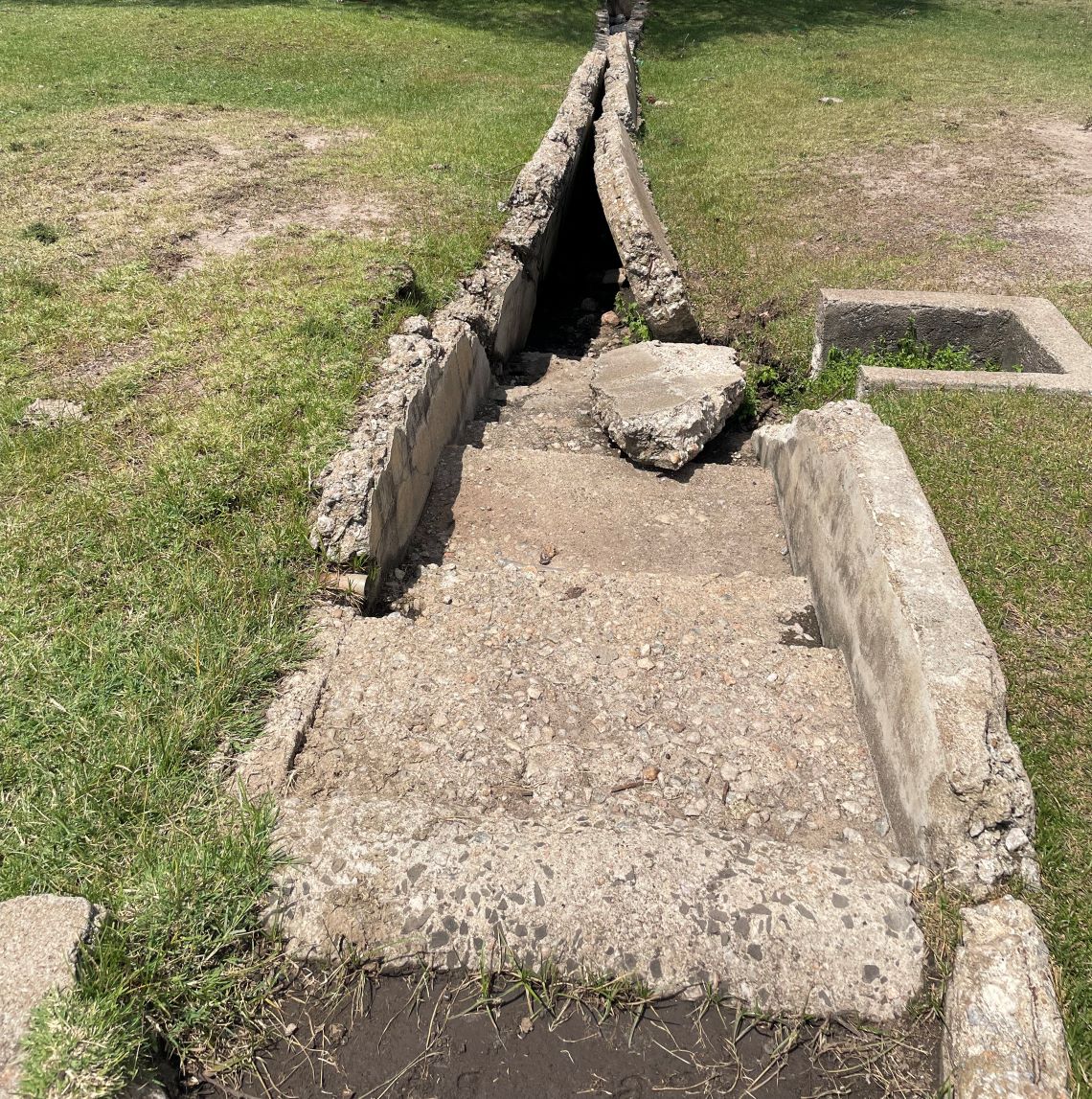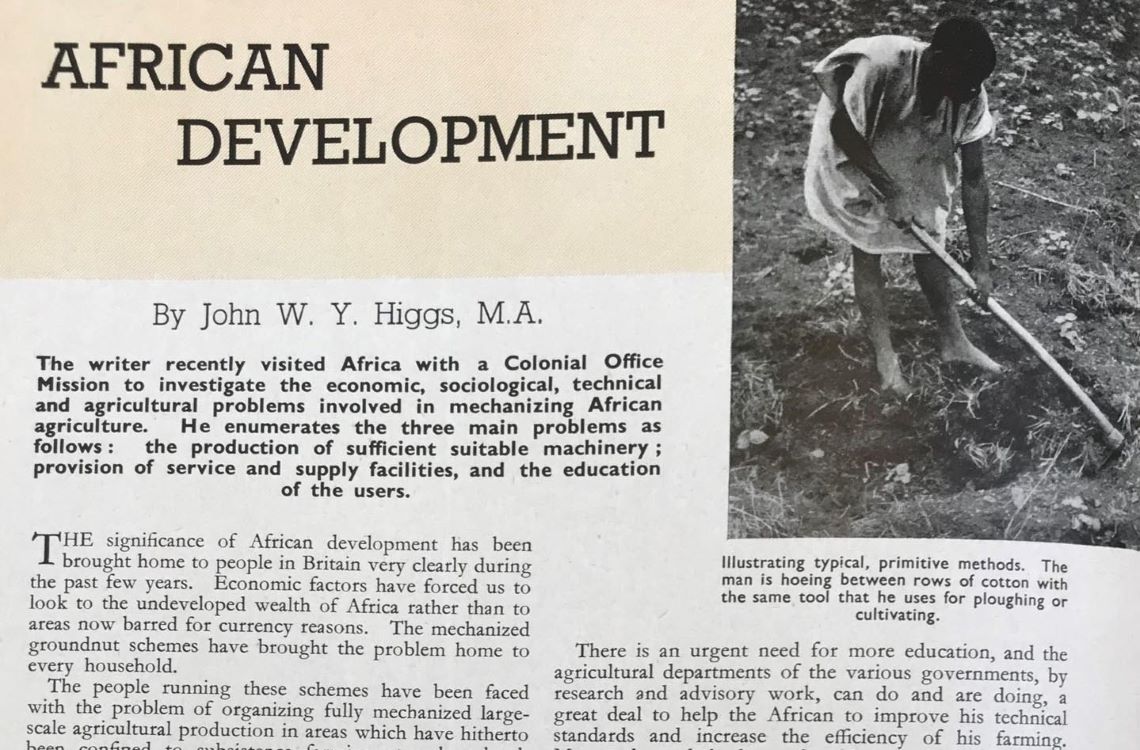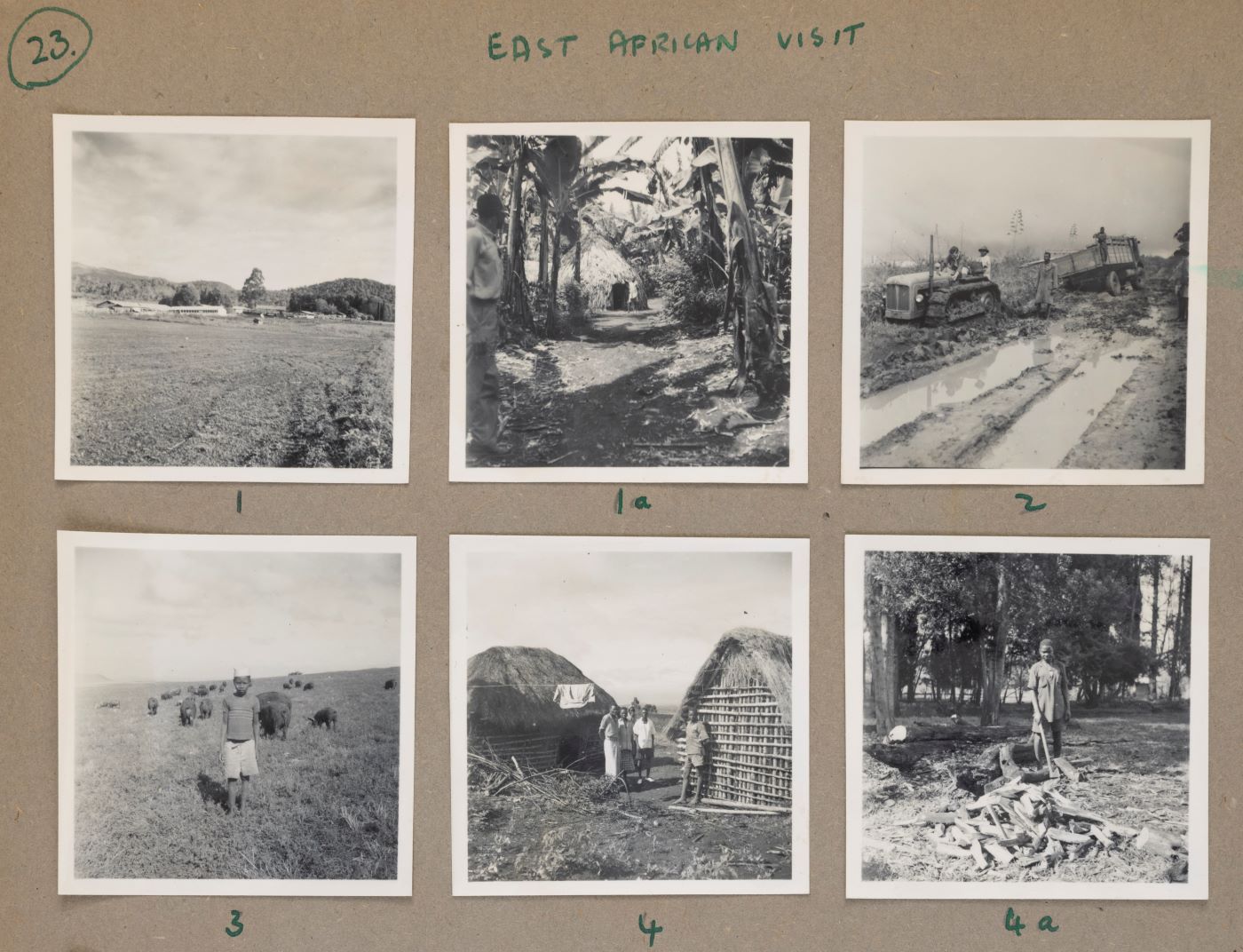Cattle, colonialism, and conversations about land
Exploring connections between The MERL and British agricultural influence in East Africa.
In this blog, Curator Ollie Douglas shares reflections on a trip he took to Kenya and Tanzania last year. This journey connected with a wider project of knowledge-sharing and healing between UK museums and Maasai communities. It also provided Ollie with a chance to explore connections between The MERL and British agricultural influence in East Africa.
The project that took me to Kenya and Tanzania was not primarily focused on histories of farming or of land. It was actually centred on a handful of objects held at the Pitt Rivers Museum in Oxford. A chance encounter between Maasai activist Samwel Nangiria and these objects a few years ago became the basis for the Maasai Living Cultures project, which in turn developed into a fascinating process of research and engagement, coordinated in partnership with InsightShare and the Pan-African Living Cultures Alliance. This led ultimately to a request from senior Maasai leaders that a delegation connected with the Pitt Rivers Museum participate in processes of healing. I was lucky enough to be invited along to bear witness.
The resultant ceremonies took the form of members of the Pitt Rivers team herding cattle to five different Maasai families. But these processes of healing are not really mine to share, I will leave it for our Maasai colleagues and for InsightShare and the Pitt Rivers Museum to tell this story in their own ways. In the meantime, you can find out more about the results of their work here. Instead, I want to share some observations that emerged in the course of my trip, and which bring the story of English farming, nature, and land into close alignment with the experience of farming, nature, and land amongst East African communities.

Like many Indigenous peoples, the Maasai have been and continue to be impacted heavily by land dispossession. They were forcibly moved at several key moments during the colonial period, including in 1904/1905 when they were pushed out of parts of British East Africa (present-day Kenya) that were earmarked for white settlers. This initial process saw the Maasai restricted to two separate reserves; Laikipia to the north and a second reserve on the southern border with German East Africa (roughly present-day Tanzania). Soon after this, in 1913, the Maasai were then consolidated into one single enlarged version of the reserve to the south. The impetus for these forced movements was primarily British interest in fertile agricultural land known as the ‘white highlands’, and was also linked to the management of cattle diseases, wildlife, and various other factors.
The artefacts that triggered the Maasai Living Cultures project are themselves examples of material dispossession of a slightly different kind. They appear at first glance to have little to do with land and yet the histories of the families to which they belonged tell a different story. In fact, the entire story of the Maasai is one of movement. Initially it is a story of eastward migration during the precolonial period. Then a story of mobile pastoralist ways of life and ideas of land management that differ from a European focus on possession; instead the focus both was and still is on access to suitable grazing for livestock, careful connections with the environment, and on strong connections with place. And, of course, following colonisation and up to present-day, the Maasai story has been one of moving or being moved from place to place as land was variously divided, enclosed, appropriated, or otherwise taken away from Indigenous control. Indeed, just as the objects themselves were displaced, the families they came from are also now far from where they once were.
Cultural dispossession of artefacts is arguably a byproduct or extension of wider colonial processes of dispossession, including the taking of land and resultant resource extraction. European ideas of possession are fundamentally rooted in mechanisms of controlling air, water, and land, and all the things that live or reside within them. These once commonly held resources and spaces have historically been closed off and controlled in many different ways. And just as some people are granted access rights, others are denied them. This is the process of land enclosure and of privatisation.
You may wonder what the rural experiences of pastoralist people in Kenya and Tanzania has to do with heritage held by the Museum of English Rural Life. The shared experience of enclosures of this kind is one key area of overlapping histories. The history of land enclosure in England is well documented and is a story of dispossession impacting on lower social classes in favour of aristocratic, wealthy, and land-owning classes. In the UK we have several contemporary organisations that are currently pushing back against elements of these historical processes, preserving what is left of our right to roam and to access and make use of a wide range of open spaces. And in Kenya and Tanzania, many Maasai dispute the historic processes through which land was taken from them and many are now experiencing and taking an activist stance against present-day enclosures as land continues to be repurposed for wildlife reserves or shifted from community land into private and individual hands.
Somewhere in the middle of all of this are the traces of colonial land control, whether in the form of a disused cattle dip I saw in the Loita Hills, located right beside a campsite near where some of the healing ceremonies were held, or the continued existence of farms established during the colonial period in land historically associated with Maasai and other Indigenous communities. The dip is a scar on the landscape that references a time when Indigenous Maasai herders were forced to treat and trade their cattle in ways favoured by British administrators. In fact, just up the hill from our campsite was the site of an infamous example of anti-colonial resistance that focused on precisely this tension, the story of which was recounted to me by Patrick Kotonto, a local Maasai man. In 1946, the District Commissioner of Narok, Major Hugh Grant, was killed by Maasai moran (warrior) Karambu ole Sendeu in response to being made to sell his favourite bull as part of forced participation in British-administered cattle trading.

In relation to the imposition of colonial-era farming within appropriated landscapes of East Africa, I was able to visit one such farm in present-day Tanzania, which had actually been first established during the German period, and was later under British control following the seizing of Tanganyika during the First World War. After this time, such plots were then leased to European farmers. During the intervening period, under British caretaker governance and prior to Tanzanian independence, the site I came to visit – Simba Farm – was owned for a decade by the prominent English farmer Clyde Higgs. Clyde was the uncle of MERL’s founding Keeper, John Higgs, and both he and his nephew had spent time visiting and advising on big agricultural extension projects throughout sub-Saharan Africa in the late-1940s. Inspired and excited as he was by the processes of new cultivation and colonial agricultural extension that Clyde saw, he decided to invest in Simba in 1949. The MERL has recently been given a small archive of photographs and materials connected with Clyde Higgs and amongst these are evidence of his Simba experiences. Read alongside other accounts of his time there, scattered amongst the pages of journals in the MERL Library, we can begin to piece together a picture of his motivations and his attitudes towards Maasai and others in East Africa.

Unpicking the legacies of land enclosure in relation to the farm that Clyde Higgs once owned is not simply a case of weighing these up against the story of the Maasai having been pushed further away from this landscape but must also pay reference to the Chagga peoples whose traditional lands included the forested foothills of West Kilimanjaro. In addition to this, just over the border from Simba to the north, Amboseli National Park was then being established within part of what had been that vast southern Maasai reserve, rights to which had been granted in 1913. Yet more dispossession, this time favouring wildlife over pastoralist occupants and users of this land.

As Right to Roam and other activists in the UK campaign for rights of nature and ideas of ‘wild service’ to play a part in expanding our rights to access land freely, ecological debates in East Africa continue to pit Maasai communities against wildlife conservationists in simplified, polarised, and highly problematic ways. The history of East African land grabs and colonial agricultural interventions is in essence an extension of the story of similar processes of ‘improvement’ and land use in the UK context. Although my trip to Kenya and Tanzania came to an end last summer, I am at the beginning of a shared journey into exploring the common values and ideas that unite UK conversations about land, access, heritage, creativity, and nature with those taking place amongst Maasai and other Indigenous communities and contexts overseas.
Watch this space. We’ll be sharing online content that tells the story of Clyde Higgs’ links to East Africa and how this is connected in turn to the origins of The MERL and to present-day agricultural research funding. We’re also looking into new ways to explore shared challenges around land with Maasai colleagues, academic specialists, organisations represented in The MERL collection (e.g. Open Spaces Society), and new partners like the Foundation for Common Land, Arts&Heritage, Right to Roam, and others. In the meantime, you can find out more about some of these colonial connections and cultural crossovers by joining us for the next Our Green Stories tour on 19th March, which will be led by Ollie in The MERL galleries.
